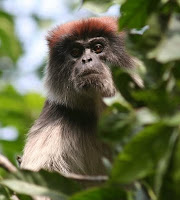Safari Notes: Liuwa Plains

The wildebeests are back. " A dust storm of migrating wildebeests pounds through Zambia's Liuwa Plain National Park. Photographer Chris Johns calls the little-visited park a 'rival of the Serengeti.. .' is how the National Geographic magazine describes the sight in Zambia, back in 1997. Many may have heard of the Liuwa Plains , but very few tourists indeed, have been to the almost 3,700 square kilometers remote, vast national park - in Western Zambia. Though the plains has a variety of many birds and other animals, and a spectacular display of golden grassland - the biggest and most fascinating attraction is the awesome migration of wildebeests; blue wildebeests. Every year, running through November and December - the second largest wildebeest migration on earth of tens of thousands of wildebeests, cross over from Angola to Zambia. Only the wildebeest migration of the Masai Mara-Serengeti, offers a much more spectacular sight. Due to the long civil war in Angola, ma...




